Traduzione generata automaticamente
Mostra originale
Mostra traduzione
4 CHAIRS COPY OF THE VERY RARE SEAT OF THE MANUFACTURE OF SIGNA IN TERRACOTTA 20th Century The original is for sale in 1stdibs Handmade by the Cecchi di Santa Lucia di Uzzano factory, Pescia (Pistoia). This factory, active since the end of 1800, produced this garden seat starting from the 1920s. Height 76 cm Width 60 cm Depth 47 cm Weight 29 Kg Height of the back 31 cm Seat height 45 cm Manufacturer Manifattura Laterizi O. Cecchi Material Red terracotta from Uzzano (Pistoia) Condition Used Signa Manufacture is a historic terracotta ceramic workshop. It was created in 1895 by Camillo Bondi. " At the beginning of the twentieth century, Signa was still one of the major industrial centers of straw. To that industry, which had made the name of the town known beyond the national borders, another activity had been added which, from the last five years of the nineteenth century and in a short space of years, would relaunch its name on the European and American markets: the artistic terracotta industry "Manifattura di Signa", founded in Signa (Florence), in 1895 by Camillo Bondi, in the premises of the "Fornaci di Signa" factory owned by his brother Angelo. At that time, the taste for the false antique continued to seduce with all its charm, and in ceramics the interest in tradition had pushed the most important Italian manufacturers to revisit Renaissance forms and decorations, reaching with a high level of artisanal expertise the ancient virtuosity of the historiated and the grotesque. If those productions interpreted the antique with eclecticism typical of the nineteenth century, the Manifattura di Signa instead, he aimed for the perfect resemblance of the real, both through the forms cast when possible on the original, and by means of patinas simulating those of marbles and bronzes and even the damage of time, in order to obtain the appearance of the authentic piece, both visually and tactilely and, in certain bronzes, even in sound. with this spirit, reproductions of sculptural and decorative masterpieces of all times will take shape from the Arno mud: from Etruscan to Greek statuary, from Roman to Renaissance, from Moorish vases to contemporary Art Nouveau creations. The resulting success, demonstrated by numerous exhibition awards such as the medal at the Universal Exhibition in Paris in 1900, where he exhibited numerous plastic terracottas, suitable for decorating exteriors, with a particular patina that improved their appearance and increased resistance to atmospheric agents, soon expanded the number of occupations and the specialization of young artists supported by the experience of sculptors of excellent fame, called to Signa for new ideas by the Bondi brothers, the brilliant founders and managers of the Manufacture, coming from a family of the upper middle class Jewish Livorno and close to the intellectual and anti-positivist environment of the Florentine magazine "Il Marzocco". with the new industry, an informal school of young workers was thus generated in Signa, who, although lacking regular education, growing under the experience of the sculptors and in contact with the most sublime models of universal classicism, a true concentration of the world's museums, were naturally stimulated and educated to the beauty and proportions of forms, so much so that they became refined craftsmen, plasticizers, sculptors, capable of giving life to other similar manufactures." SOURCE: Marco Moretti, Bruno Catarzi sculptor, 1903-1996, Edizioni Masso delle Fate, Signa 2005.
4 SEDIE COPIA DELLA RARISSIMA SEDIA DELLA FABBRICA DI SIGNA IN TERRACOTTA XX SECOLO L'originale è in vendita su 1stdibs Realizzata a mano dalla fabbrica Cecchi di Santa Lucia di Uzzano, Pescia (Pistoia). Questa fabbrica, attiva dalla fine del 1800, produsse questo sedile da giardino a partire dagli anni Venti. Altezza 76 cm Larghezza 60 cm Profondità 47 cm Peso 29 Kg Altezza schienale 31 cm Altezza seduta 45 cm Produttore Manifattura Laterizi O. Cecchi Materiale Terracotta rossa di Uzzano (Pistoia) Condizione Usato La Manifattura di Signa è uno storico laboratorio di ceramica in terracotta. È stata creata nel 1895 da Camillo Bondi. "All'inizio del Novecento, Signa era ancora uno dei maggiori centri industriali della paglia. A quell'industria, che aveva fatto conoscere il nome della città oltre i confini nazionali, si era aggiunta un'altra attività che, a partire dall'ultimo quinquennio dell'Ottocento e in un breve arco di anni, avrebbe rilanciato il suo nome sui mercati europei e americani: l'industria di terrecotte artistiche "Manifattura di Signa", fondata a Signa (Firenze), nel 1895, da Camillo Bondi, nei locali della fabbrica "Fornaci di Signa" di proprietà del fratello Angelo. In quel periodo il gusto per il falso antico continuava a sedurre con tutto il suo fascino, e nella ceramica l'interesse per la tradizione aveva spinto le più importanti manifatture italiane a rivisitare forme e decori rinascimentali, raggiungendo con un alto livello di perizia artigianale l'antico virtuosismo dell'istoriato e del grottesco. Se quelle produzioni interpretavano l'antico con l'eclettismo tipico dell'Ottocento, la Manifattura di Signa puntava invece alla perfetta somiglianza con il vero, sia attraverso le forme fuse quando possibile sull'originale, sia per mezzo di patine che simulavano quelle dei marmi e dei bronzi e persino i danni del tempo, al fine di ottenere l'aspetto del pezzo autentico, sia visivamente che tattilmente e, in certi bronzi, persino nel suono. con questo spirito, dal fango dell'Arno prenderanno forma riproduzioni di capolavori scultorei e decorativi di tutti i tempi: dalla statuaria etrusca a quella greca, da quella romana a quella rinascimentale, dai vasi moreschi alle creazioni liberty contemporanee. Il successo che ne deriva, dimostrato da numerosi riconoscimenti espositivi come la medaglia all'Esposizione Universale di Parigi del 1900, dove espone numerose terrecotte plastiche, adatte alla decorazione di esterni, con una particolare patina che ne migliora l'aspetto e ne aumenta la resistenza agli agenti atmosferici, ben presto si ampliò il numero delle occupazioni e la specializzazione dei giovani artisti sostenuti dall'esperienza di scultori di ottima fama, chiamati a Signa per nuove idee dai fratelli Bondi, i brillanti fondatori e gestori della Manifattura, provenienti da una famiglia dell'alta borghesia ebraica livornese e vicini all'ambiente intellettuale e antipositivista della rivista fiorentina "Il Marzocco". con la nuova industria si generò così a Signa una scuola informale di giovani operai che, pur privi di un'istruzione regolare, crescendo sotto l'esperienza degli scultori e a contatto con i modelli più sublimi della classicità universale, un vero e proprio concentrato di musei del mondo, furono naturalmente stimolati ed educati alla bellezza e alle proporzioni delle forme, tanto da diventare raffinati artigiani, plastificatori, scultori, capaci di dare vita ad altre manifatture simili." FONTE: Marco Moretti, Bruno Catarzi scultore, 1903-1996, Edizioni Masso delle Fate, Signa 2005.
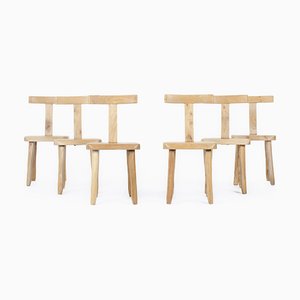

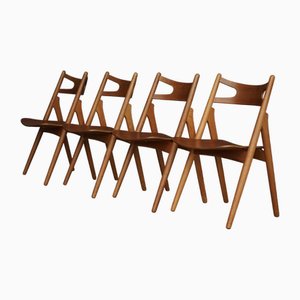

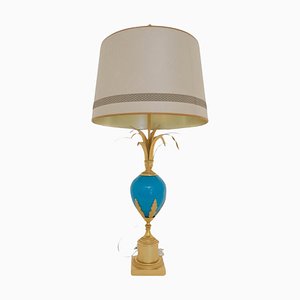
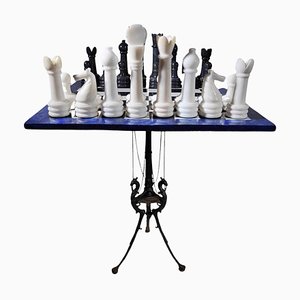
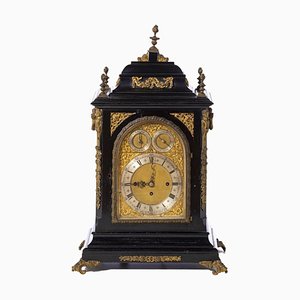
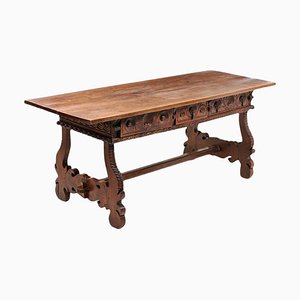
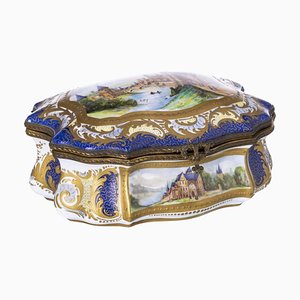

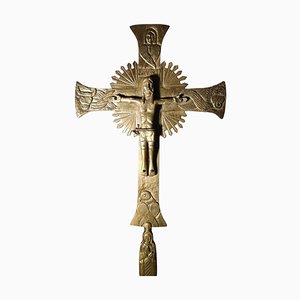

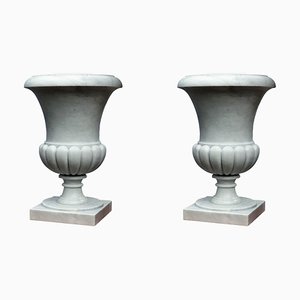
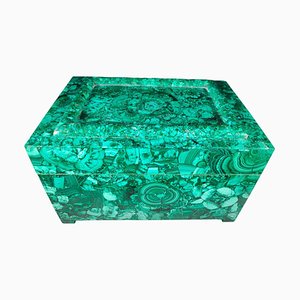


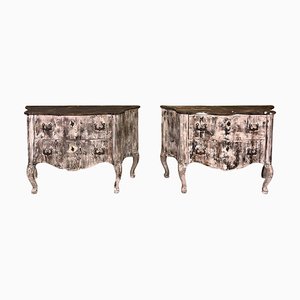

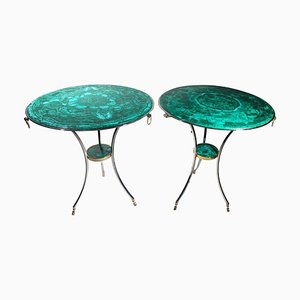
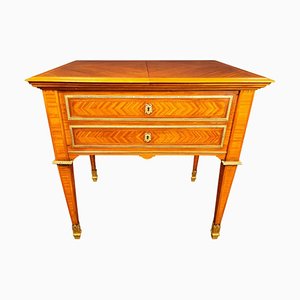
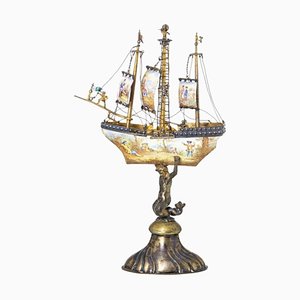



Contattaci
Fai un'offerta
Abbiamo notato che sei nuovo su Pamono!
Accetta i Termini e condizioni e l'Informativa sulla privacy
Contattaci
Fai un'offerta
Ci siamo quasi!
Per seguire la conversazione sulla piattaforma, si prega di completare la registrazione. Per procedere con la tua offerta sulla piattaforma, ti preghiamo di completare la registrazione.Successo
Grazie per la vostra richiesta, qualcuno del nostro team vi contatterà a breve.
Se sei un professionista del design, fai domanda qui per i vantaggi del Programma Commerciale di Pamono